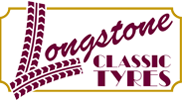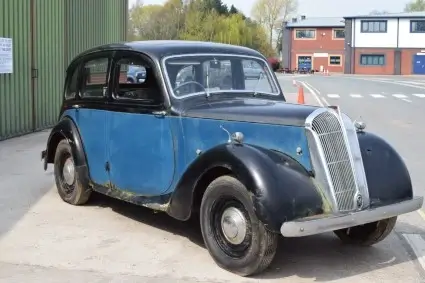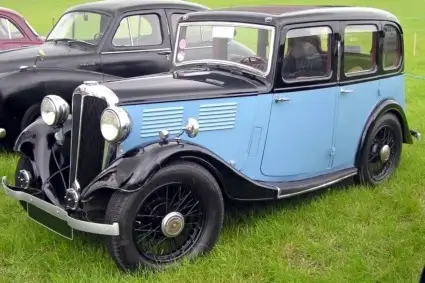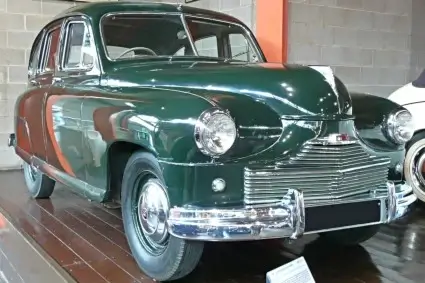Standard Tyres
Classic Standard Tyres
On the following pages, Longstone Classic Tyres give classic tyre fitment recommendations for Standard cars.
If your Standard car is not listed, don't panic! Please give us a call on:
01302 711 123
or
Email: sales@longstonetyres.co.uk
Vintage Standard Tyres
Longstone Tyres can provide tyres for across the whole Standard range, from the distinguished-looking vintage Standard Flying Fourteen to the popular post-World War Two Standard Vanguard.
Standard Tyres
The following list are our recommendations for Standards:
- 155 HR 13 Michelin XAS FF for a Standard Ten & Pennant.
- 5.50 R 16 Michelin X for a Standard Flying 14 & Standard Vanguard (Pre-1949).
- 165 SR 15 Michelin XZX for a Standard Vanguard (Post-1949), Vignale, Ensign & Luxury 6.
Standard History
1903 Reginald Maudslay founded the company in Coventry, which was supported by John Wolfe Barry. The firm was founded in a modest workshop on Much Park Street in Coventry, employing seven workers to build the first automobile, which was powered by a single-cylinder engine with a three-speed transmission and shaft drive to the rear wheels. This was rapidly replaced by a two-cylinder model, which was swiftly followed by three and four-cylinder variants, and finally, in 1905, the first six-cylinder model. In addition to offering full chassis, the business discovered a profitable market in selling motors for fitment to other automobiles, particularly when the owner desired greater power.
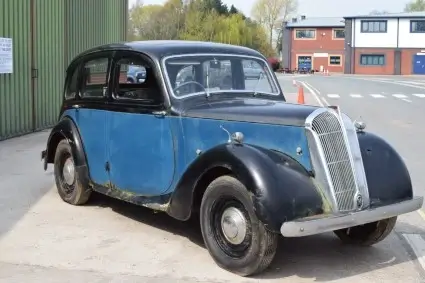
1905 The business set up shop at the Crystal Palace Motor Show, when London dealer, Charles Friswell, agreed to buy the whole factory output. This unique agency relationship lasted for several years. Friswell was appointed Chairman of the Board of Directors in 1907. He arranged for a bank guaranteed overdraft, and the firm expanded into other facilities such as coachworks and repair and maintenance facilities. He worked tirelessly to raise the company's prominence, culminating in the provision of 70 automobiles for King George V and his company during the 1911 Delhi Royal Durbah.
1911 Friswell's company caused financial troubles for the corporation. Standard survived in 1912, but the operations were shut down for a brief period in mid-1912; Friswell's single agency relationship was terminated on September 30, 1912. Friswell sold his stake in Standard to C. J. Band and Siegfried Bettmann, the founders of Triumph Motor Cycle Company, in 1912. Standard became a public business in 1914.
During World War I, the business built over 1,000 aeroplanes at a new Canley plant that opened on July 1, 1916. Canley would eventually become the major hub of activity. Shells, mobile studios for the Engineers, and mortars were among the other combat items manufactured. 1919 Civilian car production resumed with a range of small cars, and by 1924, the company had a market share comparable to Austin, producing over 10,000 cars that year, but by the late 1920s, profits had plummeted significantly due to excessive reinvestment, a failed export contract, and poor sales of the larger cars.
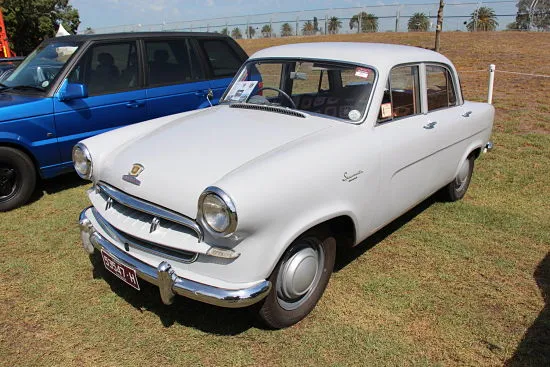
Captain John Black joined the Standard board from Hillman in 1929, and one of the things he advocated was the provision of chassis to independent coachbuilders. In the 1930s, prospects improved with the introduction of new designs, the Standard Nine and Standard Ten, which catered to the low to mid-priced market. 1935 The redesigned Flying Standards with semi-streamlined bodywork were unveiled at the 1935 New York Auto Show. The Canley plant produced 50,000 automobiles in 1939. WWII The firm continued to manufacture automobiles, although they were now mostly equipped with utility bodywork. The most renowned wartime product, however, was the Mosquito aeroplane, namely the FB VI variant.
In the pre-war period, Eight and Twelve automobiles were rapidly reintroduced into production. Greater significance was Sir John Black's purchase of Triumph, which was in administration, in 1945. Triumph was reorganised as "Triumph Motor Company (1945) Limited" a completely owned subsidiary of Standard. A profitable arrangement was also struck for the production of the compact Ferguson tractor, which helped occupy some of the enormous wartime industrial space. This agreement was largely viewed by Black as a technique of increasing earnings in order to support future automobile development.
Following the acquisition, Standard Motor Co was renamed Standard-Triumph. In 1948 The Vanguard, designed by Walter Belgrove, launched a one-model strategy that lasted until 1953 when the new Eight was launched. In addition, overseas assembly operations were established in Australia, Canada, India, and South Africa.
1954 Sir John Black relinquished control of the corporation. The reported reason for his departure was ill health, however, it is now known that the Board of Directors asked that he would leave. Alick Dick, his deputy and long-time personal assistant, took control. The business began searching for partners to support future growth, and discussions were undertaken with Chrysler, Massey-Harris-Ferguson, Rootes, Rover, and Renault, but these fell through. 1954 70,000 vehicles and 61,500 tractors were sold during the fiscal year. In September 1959 the company switched to Standard-Triumph International. In 1968, British Leyland Motor Corporation was formed as a consequence of more mergers.
